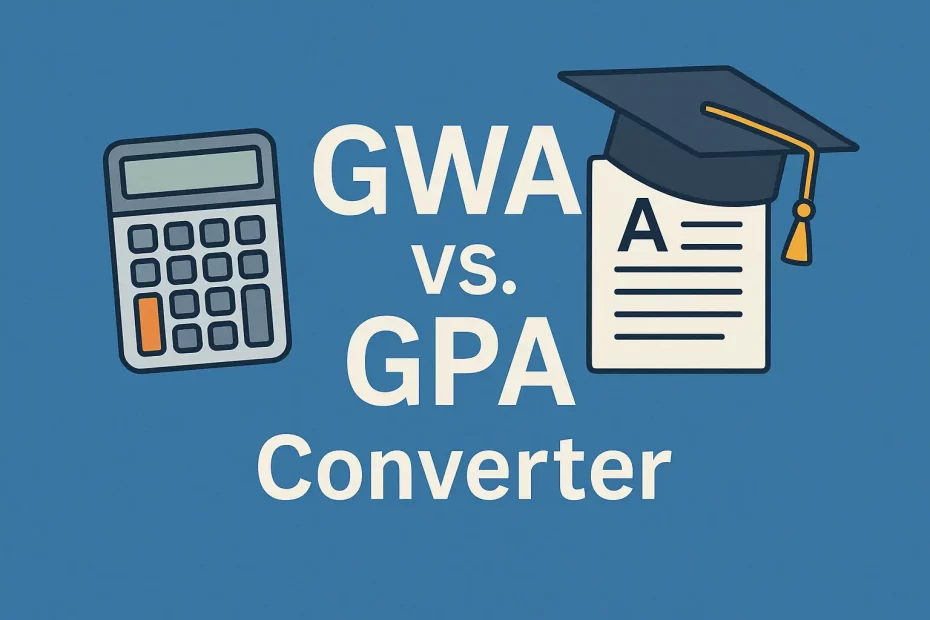When evaluating academic performance, two prevalent metrics are the General Weighted Average (GWA) and the Grade Point Average (GPA). While both serve to quantify a student’s academic achievements, they differ in calculation methods, grading scales, and regional usage. Here’s a comprehensive overview:
Contents
Definitions
- GWA (General Weighted Average): Predominantly used in the Philippines, GWA calculates the weighted average of a student’s grades, factoring in the credit units of each course.
- GPA (Grade Point Average): Widely adopted in countries like the U.S., Canada, and Australia, GPA represents the average of grade points earned, typically on a 4.0 scale, without necessarily weighting courses by credit units.
Key Differences
| Feature | GWA (General Weighted Average) | GPA (Grade Point Average) |
| Grading Scale | 1.00 (highest) to 5.00 (lowest) | 4.0 (highest) to 0.0 (lowest) |
| Calculation | (Grade × Units) ÷ Total Units | (Grade Points × Credit Hours) ÷ Total Credit Hours |
| Weighting | Considers course credit units | Typically treats all courses equally |
| Regional Use | Philippines and some Asian countries | U.S., Canada, Australia, and others |
Conversion Between GWA and GPA
Converting between GWA and GPA isn’t standardized globally, but general approximations exist. For instance, a GWA of 1.75 might correspond to a GPA of approximately 3.5 on a 4.0 scale.
Implications for Students
- Local Opportunities: In the Philippines, GWA is crucial for academic honors, scholarships, and job applications.
- International Pursuits: For students aiming to study or work abroad, understanding and possibly converting GWA to GPA is essential, as many institutions and employers are more familiar with the GPA system.
Conclusion
While both GWA and GPA aim to represent academic performance, their differences lie in calculation methods, grading scales, and regional preferences. Understanding these distinctions is vital for students navigating both local and international academic landscapes.
